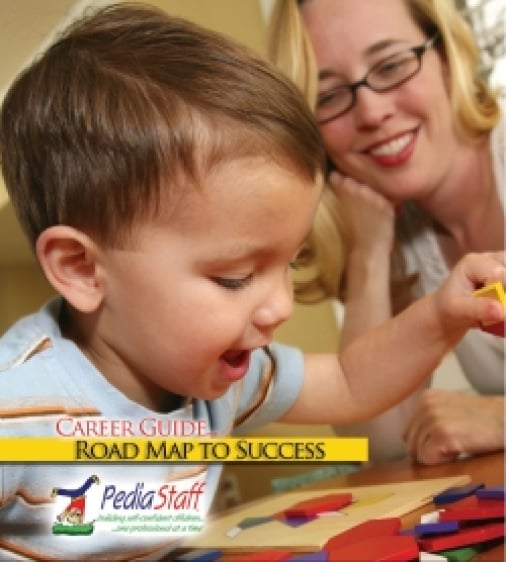SLP Corner: Suddenly “Nonverbal”: My Experience in Brazil
 by Pat Mervine, MS – CCC- SLP
by Pat Mervine, MS – CCC- SLP
For the second summer in a row, my husband and I traveled to Brazil to visit our son, Gregg, and daughter-in-law, Adi. This year was extra special, as we also met our new grandson, just three months old. Gregg has lived in Brazil for three years and speaks Portuguese like a native. Fortunately for us, our lovely Brazilian daughter-in-law speaks fluent English. For months prior to both trips, my husband worked at a self-study course in Portuguese. Being rather fluent in Spanish, he assumed that it wouldn’t be too difficult to master this new language. He was wrong; there are major differences in word order, gender, vocabulary, even pronunciation of consonants and vowels that make Portuguese one tough language to learn unless you go the “total emersion” route that our son took when he moved there. I am totally hopeless when it comes to speaking another language but, techie that I am, I went to Brazil last year well-armed with several translation and Portuguese communication board apps on my iPhone and iPad. I proudly whipped them out of my carry-on bag on arriving at my son’s apartment last summer, only to be told very firmly that I shouldn’t take either gadget outside the apartment; to show either of these in public would all but guarantee that I’d be mugged. Brazil has a crazy high import tax on many items, particularly electronics, so that iPhones, etc., cost 2-3 times more in Brazil, making them prime targets for theft. Rats! Suddenly, in Brazilian stores, restaurants, and homes of their family and friends, in the rural Northeastern region where practically no one speaks English, I learned what it was like to be communication-handicapped.
Venturing out on our own was impossible, except for an occasional walk around the neighborhood where we knew we wouldn’t have to interact with anyone. For all situations requiring communication, we were dependent on Gregg and Adi to translate. This was very apparent when we were invited to parties in the homes of family and friends. Adi, a university professor, had worked as a trained translator for an NGO while a college student, and had developed the impressive skill of listening and translating simultaneously so, when we were in social situations, she was able to keep up a running commentary for us. While I am sure this was exhausting for her, it certainly helped to keep us engaged in the conversation. Gregg, on the other hand, would listen to a relative relate a tale that had everyone laughing uproariously, then he’d turn to us and say, “He told a funny story about a cow.” Clearly, the degree to which we understood what was being discussed around us was highly dependent on the skill and effort of those translating for us. And when both Adi and Gregg were involved in conversations with other people, my husband and I looked around and smiled and nodded, but were really little more engaged than a couple of potted plants; observers, yes, participants, no.
The Brazilians that we met socially were very warm and friendly people, full of hugs and smiles and a desire to make us feel welcome. However, foreign-speaking tourists are very rare in that region, so speaking to us through our translators, especially for any length of time, was a new experience for many. As an SLP with years of experience in working with children and young adults who are nonverbal, I preach the etiquette of speaking directly to the nonverbal person, not to the companion who serves as their interpreter. In Brazil, I learned just how important that is to the nonverbal person. We would be greeted directly with big smiles and eye-contact, but then quickly the translator became the focus of the communication triangle. There would be some questions for us at first but they were spoken to the translator. For instance, instead of looking at me and asking “how do you like the food here?,” the person would look at Gregg or Adi and say, “ask her how she likes the food,” then look back to the translator for my response. It may seem like subtle difference, but it was very noticeable to me. And, being unfamiliar with us and unfamiliar with this method of communicating, the conversation rather quickly shifted to those who could speak Portuguese. And why not? It was so much easier.
In public places, such as stores and restaurants, it was very rare to meet anyone who spoke English. As I wandered through stores on my own, I would be approached by the salesperson. My response to whatever they asked was “No Portuguese. English?” The response was always a sad smile and shake of the head, and then the salesperson would walk away. My inability to communicate limited my independence; if the price wasn’t marked on the item (and often it was not), then, without a translator, I couldn’t ask the price and couldn’t make a purchase. Again, I had the experience of being physically present, but not engaged.
One experience, though, was very illuminating. We accompanied Gregg, Adi, and the baby to the public hospital clinic for a vaccination. When the three of them went into the vaccination room, the only other people in the waiting room with my husband and I were a deaf mother and her young daughter. This woman initiated a conversation with me, using great eye contact and facial expression, typical of the Deaf. Even though her signs (or were they just gestures?) were different from American Sign Language, she was easily able to tell me that her daughter had received two shots and an oral vaccine, that she didn’t cry, that her daughter was a year old, was an only child, and would likely remain so, as she kept her mom very busy. Amazingly, this was the most interactive, independent communication I had with any Brazilian who didn’t speak English–no translator needed!–and it occurred to me later that the mother probably didn’t even know that I didn’t speak Portuguese. That wasn’t a concern because she didn’t either! A thought I had pondered many times in the past came back to me again: how much better the world would be if everyone had even a rudimentary knowledge of a universal sign language. People with communication disorders, older folks who lose their hearing, and speakers of other languages would no longer be left out of the communication loop.
My experience being “nonverbal” in Brazil provided some valuable insights: the importance of speaking directly to the communication partner, the isolating feeling of not understanding what is being said around you, the loss of independence and feeling of being capable, and the relief and return to a sense of “self” when back in an environment in which I could understand and be understood. It’s not hard to extend my limited and temporary experience and resulting insights to those who live every day with significant communication limitations. Something to think about….
About the Author: Pat Mervine is a speech/language pathologist and the creator of Speaking of Speech.com. Her website is wonderful place for SLPs, teachers, and others to share tips, seek and give advice, and download free therapy materials. With 15 interactive message boards, some have called it a “virtual staff meeting.” Pat’s blog, Speaking of Speech Blog.com shares what she has learned in 20 years of working with students, ages 3-21, who have mild to profound communication needs, and what she continues to learn every day. She also has a new website, www.patmervine.com which relates to her children’s book about an AAC user and contains freebies and resources specific to AAC and assistive technology.
Please support our contributors and visit Speaking of Speech.com
PediaStaff is Hiring!
All JobsPediaStaff hires pediatric and school-based professionals nationwide for contract assignments of 2 to 12 months. We also help clinics, hospitals, schools, and home health agencies to find and hire these professionals directly. We work with Speech-Language Pathologists, Occupational and Physical Therapists, School Psychologists, and others in pediatric therapy and education.
